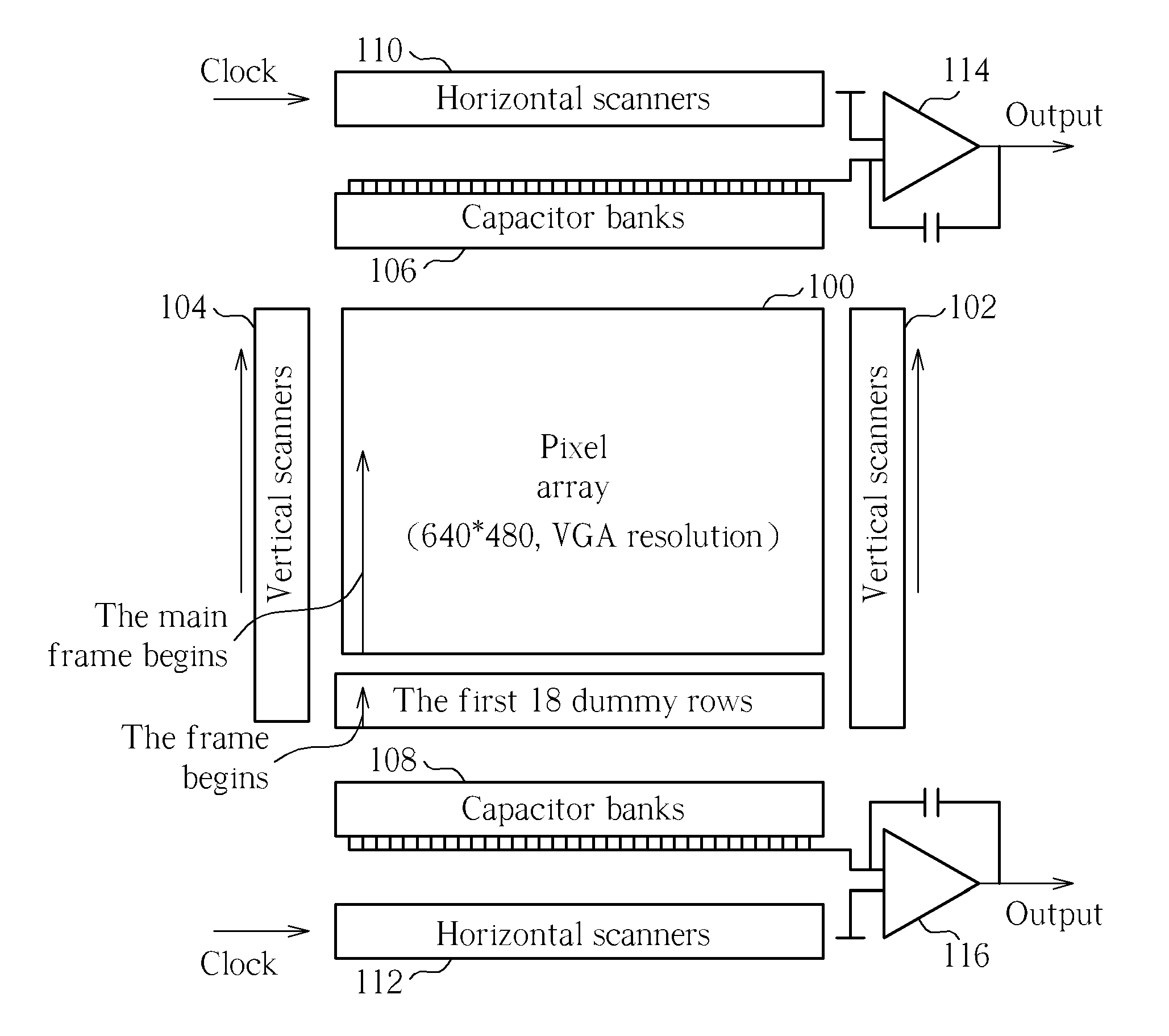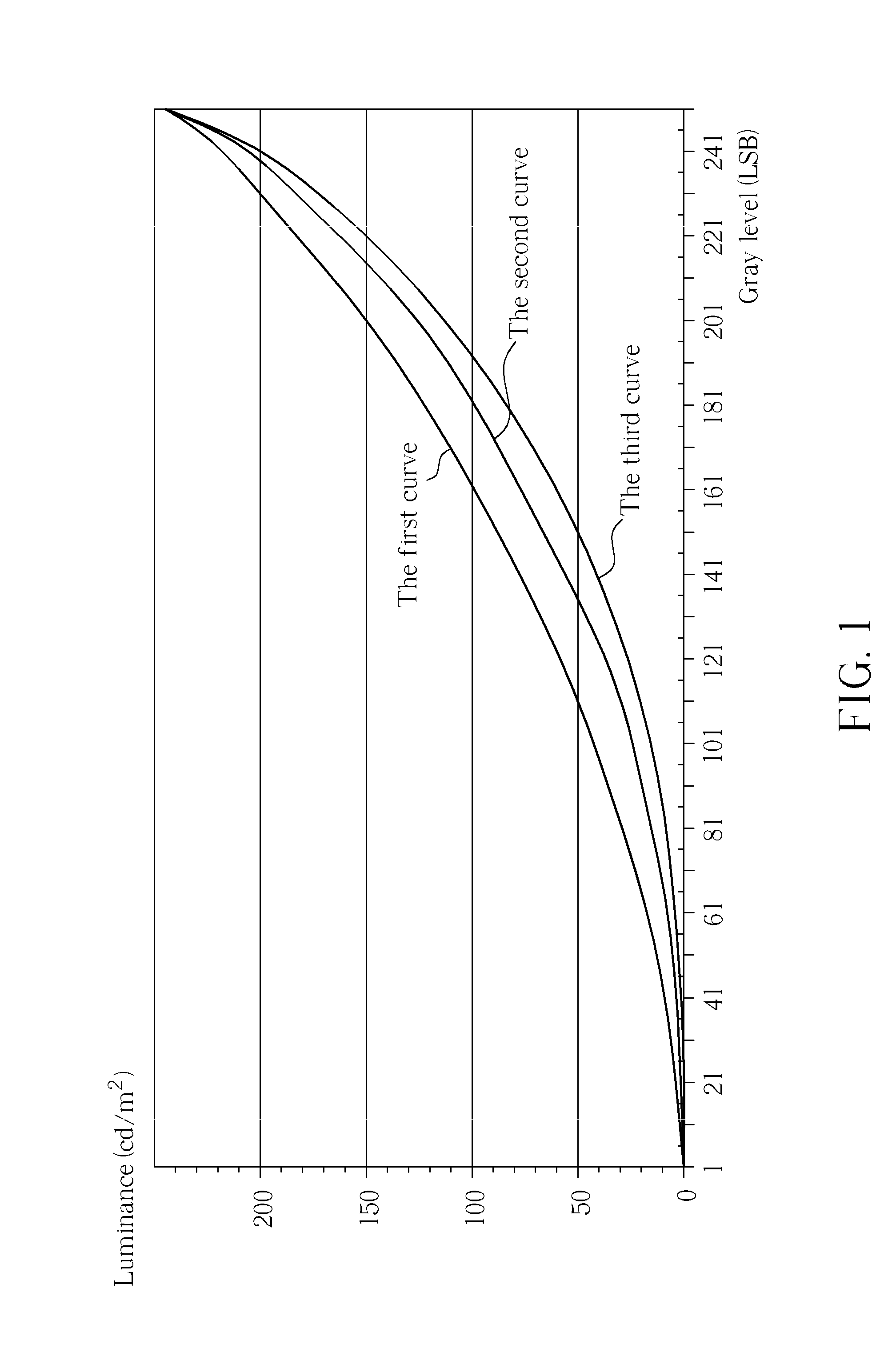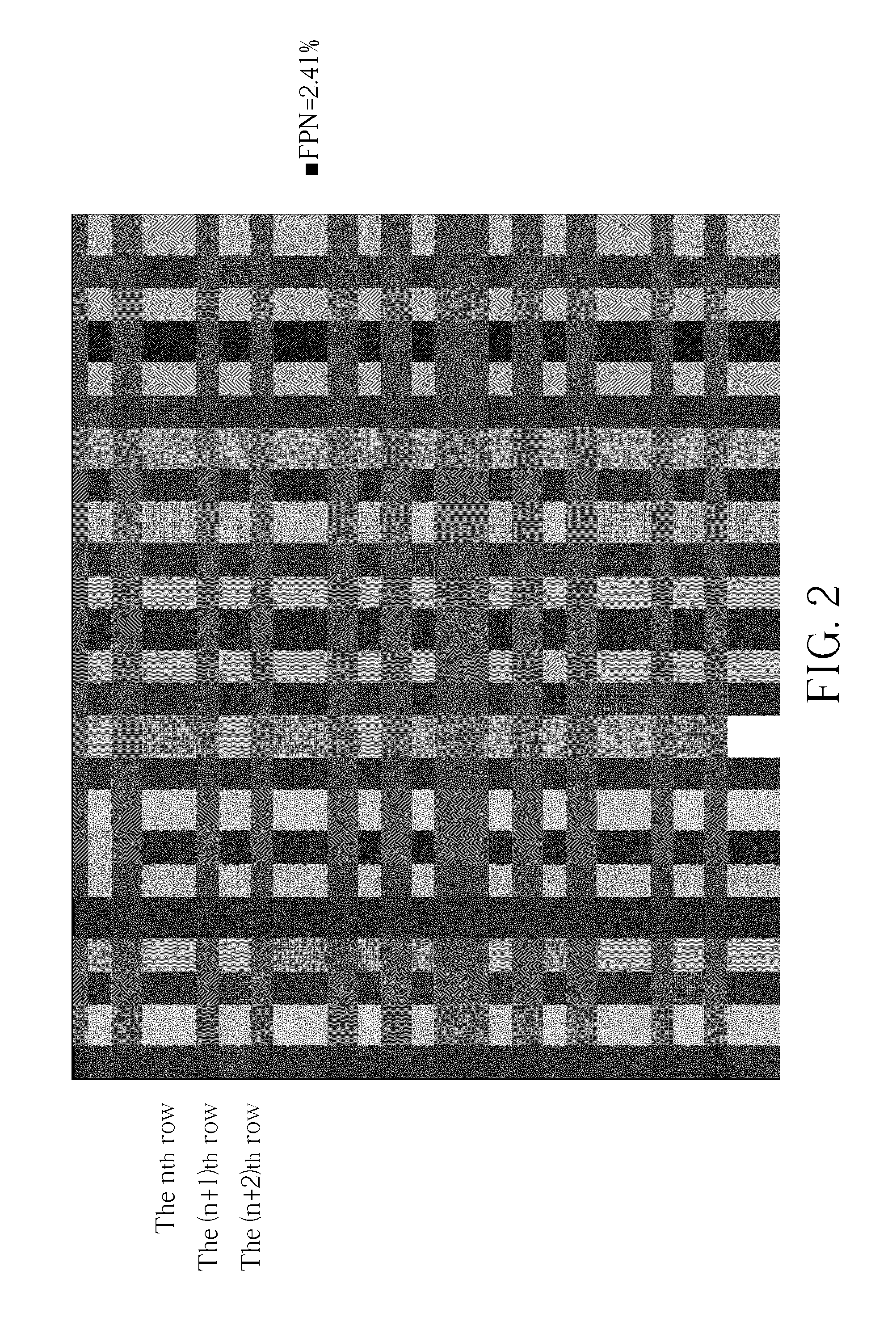Method of generating a gain of an image frame
- Summary
- Abstract
- Description
- Claims
- Application Information
AI Technical Summary
Problems solved by technology
Method used
Image
Examples
first embodiment
[0020]Please refer to FIG. 5. FIG. 5 is a flow chart of generating a gain of an image frame according to the present invention. The steps in FIG. 5 include:
[0021]Step 10: Set the gain of the PGA as 1;
[0022]Step 12: Start scanning an image frame row by row;
[0023]Step 14: Get the images of the first 18 rows of the image frame;
[0024]Step 16: Average the images of the first 18 rows of the image frame to generate an average value;
[0025]Step 18: Find a corresponding gain from a look up table of gain according to the average value, the look up table has been set up according to the luminance sensitivity of human eyes;
[0026]Step 20: Continue scanning the remaining rows of the image frame (the main frame) row by row, and adjust the scanned information of the main frame according to the gain to generate the image of the main frame.
[0027]In the first embodiment of the present invention, first set the gain of the PGA to 1 before scanning the image frame to make the scanned information of the im...
second embodiment
[0030]If the PGA hasn't been set to 1 before scanning the image frame, the average value derived through averaging the images of the first 18 dummy rows should be divided by the gain of the PGA 114 to get the average value of the information of the first 18 dummy rows. After the average value of the information of the first 18 dummy rows is derived, find the corresponding gain from the look up table of gain. Then adjust the information of the main frame according to the corresponding gain to generate the image of the main frame. Please refer to FIG. 7. FIG. 7 is a flow chart of generating a gain of an image frame according to the present invention.
[0031]Step 30: Start scanning an image frame row by row;
[0032]Step 32: Get the images of the first 18 rows of the image frame;
[0033]Step 34: Average the images of the first 18 rows of the image frame to generate an average value;
[0034]Step 36: Divide the average value by the gain of the PGA 114 to generate an average value of the informati...
PUM
 Login to View More
Login to View More Abstract
Description
Claims
Application Information
 Login to View More
Login to View More - R&D Engineer
- R&D Manager
- IP Professional
- Industry Leading Data Capabilities
- Powerful AI technology
- Patent DNA Extraction
Browse by: Latest US Patents, China's latest patents, Technical Efficacy Thesaurus, Application Domain, Technology Topic, Popular Technical Reports.
© 2024 PatSnap. All rights reserved.Legal|Privacy policy|Modern Slavery Act Transparency Statement|Sitemap|About US| Contact US: help@patsnap.com










